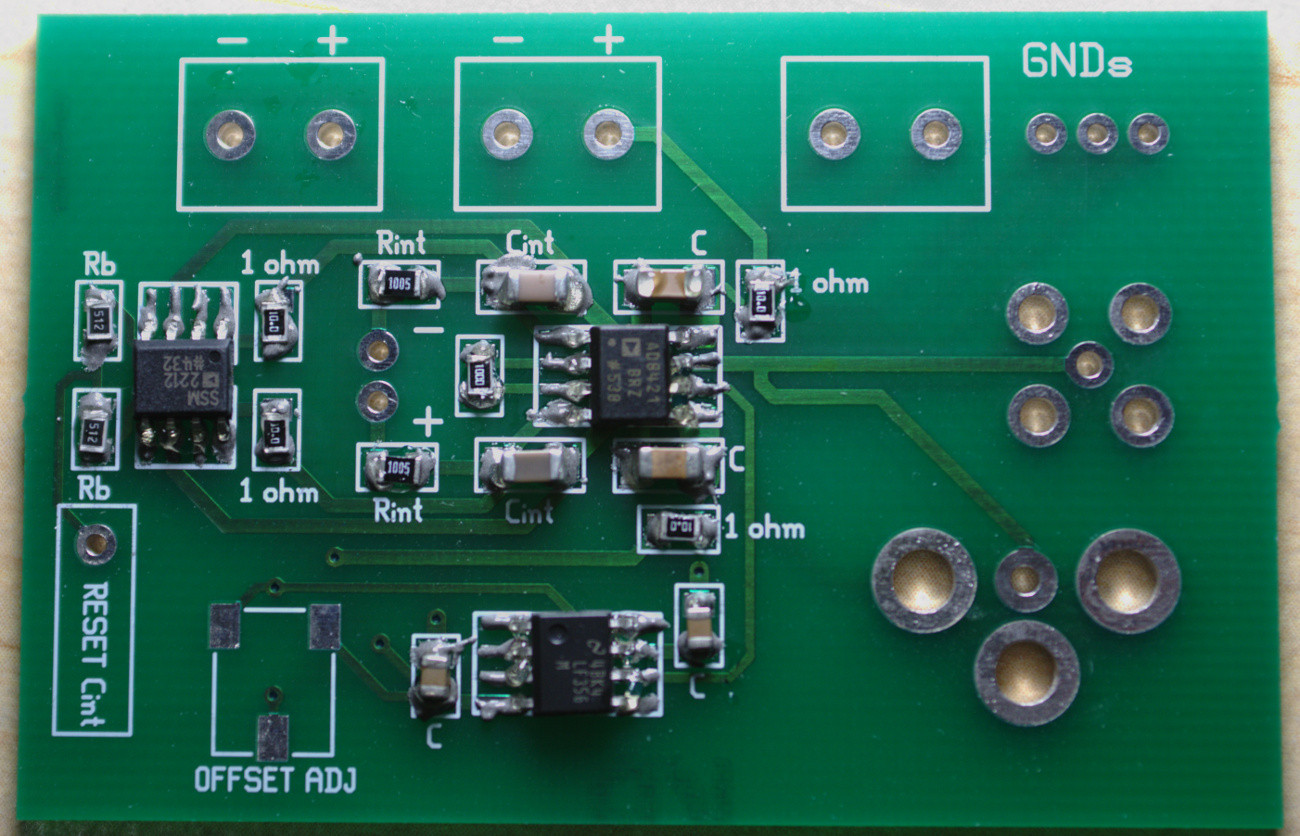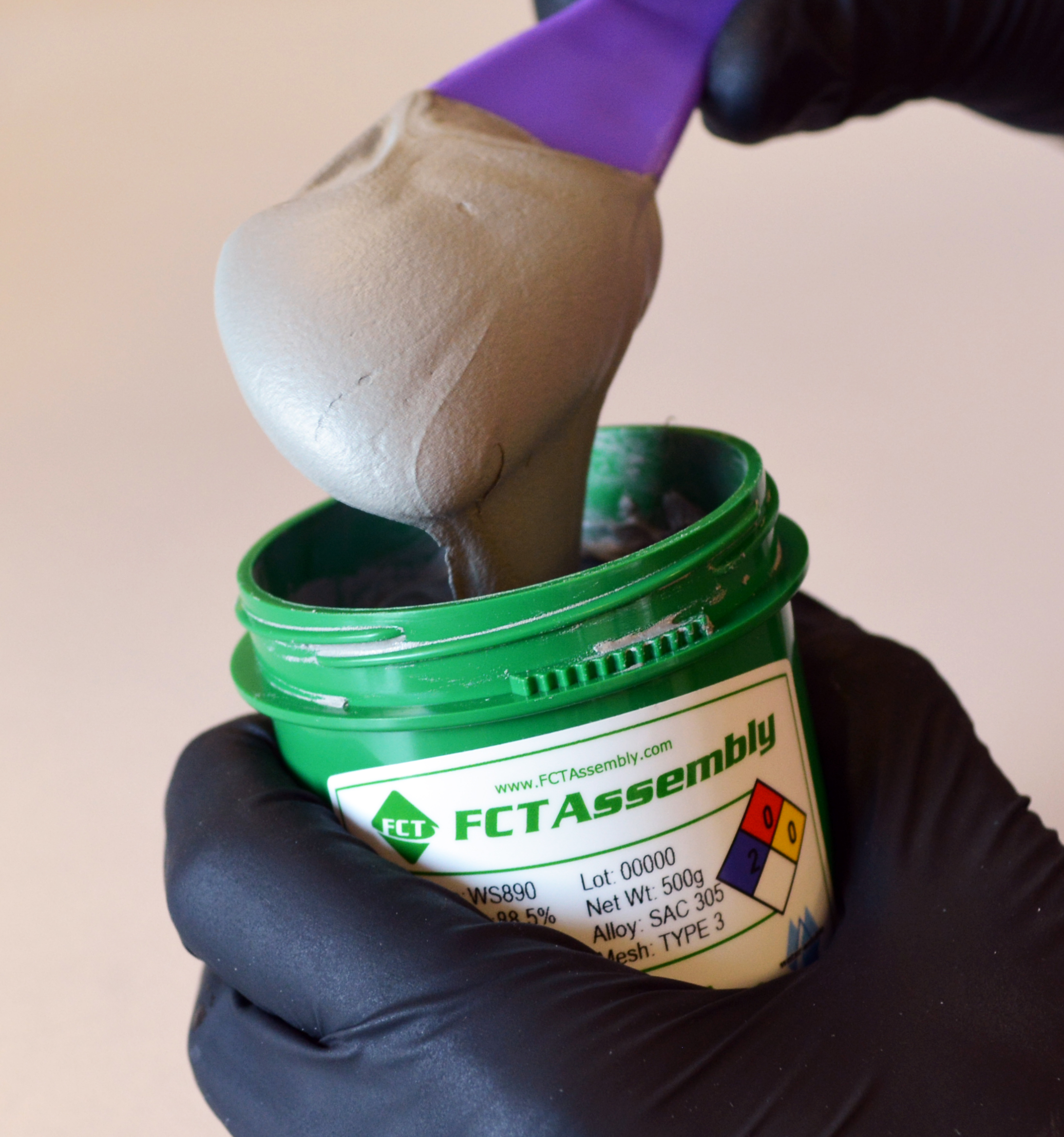5 Properties of Lead Free Solder Paste and Our Top Picks
Solder manufacturers started producing lead free solder paste to fulfill the soldering requirements of smaller SMT components. And to adhere to the restrictions against the use of lead-based solders.
As the size of electronic components continues to shrink. And restrictions on the use of lead in consumer electronics become more stringent. Lead free solder paste continues to bask in the limelight because of its lead-free composition and ability to solder tiny SMT components.
In this article, you will find some of the properties that define the quality of a solder paste. Then we will discuss some of the best types of lead free solder paste that are available. But first, what is lead free solder paste?

Lead Free Solder Paste: The Soldering Wire Counterpart
A solder paste is a solder that comes in a different physical form than conventional solder wires and blocks. It has a thick, paste-like texture which gives it the name- solder paste.
Solder paste is made by mixing powdered solder with solder flux. This creates a solder that does not need additional flux during soldering. Solder paste has very tiny solder particles suspended into the flux. These solder particles melt during the solder reflow process and work to bind the metals together.
The purpose of the flux in the solder paste is the same as in any other solder. It removes oxides from the solder joint. And prevents further oxidation by sealing the joint and protecting it from coming in contact with air. It also improves the wetting properties of the solder.
Solder paste has the same classifications as solder wire. When buying a solder paste, you will have an option of choosing from lead-based and lead-free solder paste. Moreover, solder pastes are also classified based on the type of flux used. You can choose from rosin-based, no-clean, and water-soluble flux.
Apart from the typical lead or lead-free and flux-based classification solder pastes have another factor that divides them into different categories. This factor is the grade of solder paste.
Grades of a Solder Paste
The size of the solder particles suspended in the flux defines the solder’s grade. Manufacturers divide solder paste into eight different grades, from type 1 to type 8, with type 1 carrying the largest particles and type 8 carrying the smallest. The size range of the particles suspended in flux in a solder paste falls between 2mm and 150 mm.
Properties of Lead Free Solder Paste
The properties of a lead-free solder play a vital role in not only the solder selection and soldering processes, but also determine beforehand how well a solder will perform under certain process conditions. Most of the properties of a solder paste are shaped by the mechanical and electrical performance of the joint that the given solder paste forms.
1. Melting Point
The temperature at which the solder melts and flows is called its melting point. In the case of lead free solder paste, this is the temperature at which the tiny solder particles are suspended in the flux melt and flow over the area to be soldered.
The composition of a solder determines its melting temperature. Lead free solder paste melts at a higher temperature as compared to lead solders because of the presence of high melting metals such as copper and silver.
Normally, lead-free solders melt between 200-300 °C, with some solders like Sn-Bi melting lower, at 138 °C.
2. Tensile Strength
The tensile strength of a material is the measure of the maximum amount of tension it can withstand without failure.
The elements of a solder joint undergo thermal expansion when they are subjected to process temperatures. Each element has a different coefficient of thermal expansion. So, in a solder, each composing element expands differently, leading to thermal cycling and thermal shock.
The accumulation of mechanical stress within a joint due to rapid temperature changes is thermal shock. While thermal cycling is the thermal deformation of the solder at the grain boundaries.
The tensile strength of the solder determines how well a solder joint will respond to the inevitable strain resulting from thermal shock and thermal cycling.
3. Thermal Reliability
Thermal cycling leads to the recrystallization in the intermetallic compound of the solder joint and makes the solder joint rough, brittle, and more susceptible to cracking.
The thermal reliability of solder is its resistance against such phenomenon that may lead to joint cracking.
The presence of La2O3 nanoparticles and silver in the solder composition has been shown to enhance the solder’s thermal reliability.
4. Shear Strength
A material's ability to tolerate shear stress without breaking or fracturing is known as its shear strength.
In the case of lead free solder paste joints, shear strength is the solder joint’s ability to bear drop impact and vibrations.
Vibrations and drop impact may lead to the development and subsequent propagation of the crack in the solder joint. Which may ultimately lead to joint failure and an open circuit.
5. Electromigration Resistance
Electromigration is the most detrimental of all the problems that may damage a solder joint. In electromigration, atoms break away from the parent metals and get carried away by the passing current. This can result in a short or an open circuit.
Since electromigration causes the metal atoms to diffuse, in solder joints, electromigration leads to the formation of cavities in the solder joint which ultimately results in joint failure.
Electromigration resistance is the capability of solder to inhibit electromigration and protect the joint from failing.
Electromigration picks up speed at high temperatures and greater current densities. Therefore, to enhance a solder’s electromigration resistance, the first step is to ensure that the joint experiences moderate temperature and current density.
Moreover, the composition of the solder also influences its electromigration. The addition of Nickel, Bismuth, and Cobalt have shown promising results against electromigration.
Lead Free Solder Paste: Solderer’s Top Picks
Lead free solder paste still has a long way to go before they can completely replace lead solders in terms of favourability. Still, many lead-free solder pastes appear to be a good alternative to the traditional lead solders. Some of these are:
Tin-Copper-Nickel-Germanium
The Tin-copper-nickel-germanium solder comprises of 0.6-0.7% copper, 0.04-0.07% Nickel and 0.006-0.007% Germanium. It is a Eutectic solder that melts at 227 °C.
The Sn-Cu-Ni-Ge lead free solder paste is not as expensive as the SAC solders and forms shiny and smooth solder joints. The presence of germanium minimizes the susceptibility of the solder joint to dross formation and enhances the wettability of the solder.
SACX0307
The SACX0307 is a fairly new addition to the lead free solder paste family. It is a suitable alternative to the traditional Sn63Pb37 solders.
This Tin-Silver-Copper solder presents a low level of dross generation and features good wettability. Moreover, it offers good over-all solderability, has a good shelf life, and promises to minimize the overall operational cost.
Tin-Bismuth Solder
Tin-Bismuth solder paste contains 42% tin and 58% bismuth and is eutectic, melting at 138 °C which makes it suitable for soldering heat-sensitive materials.
Sometimes, an Sn-Bi solder may also contain 1% silver. The presence of silver enhances the solder’s malleability and increases its melting point to 140 °C.
These solders are often considered a good alternative to the traditional SnPb solders because of their low melting temperature.
Studies have shown that they have a good reflow, show promising tensile and shear strength, and adhere nicely to the board.
However, the Sn-Bi solders are still fairly young in the world of soldering and the research is still on-going to uncover more of its properties and performance as a lead-free solder.

Conclusion
Lead free solder paste is a great alternative to the traditional solder wires that offer difficulty in soldering SMT components and is assembling PCBs. Using a lead-free solder paste makes soldering quite straight-forward, but storing the paste requires caution. Because, if exposed to air, the solder in the solder paste can oxidize or dry out.
The resistance of the lead-free solder joint against common damage-inducing problems defines their properties such as tensile strength, thermal reliability, and others that we have discussed above.
As far as the best lead-free solder pastes are concerned, the Sn-Cu-Ni-Ge lead-free solder paste, which sells under the patent name of SN100C is the most promising candidate for the lead-free soldering process.
In order to learn more, Visit our Website.




